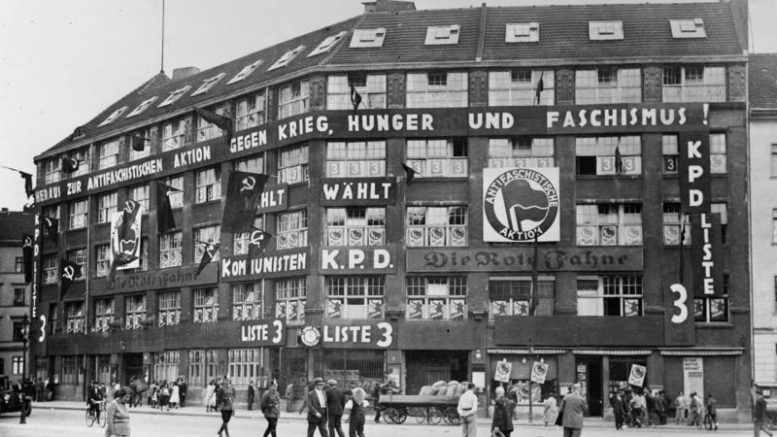This month marks the 100th anniversary of the decision by the Communist International to launch an armed uprising in Germany. The uprising, which took place in October that year, was a dismal failure. It also marked the final attempt by a Communist Party anywhere in Europe to come to power in the same way that the Bolsheviks had done in Russia.
The uprising was not something the German working class needed or desired. The Weimar Republic, however imperfect, was a democracy. Workers could vote for the Communist Party or the Social Democrats or any other party they wanted. In the 1920 elections, the Communists polled only a tenth of what the Social Democrats won, but their support was growing.
The uprising was needed by the Soviet regime, not by the Germans. The goal was to create a Soviet Germany — which would do more than anything else to ensure the survival of the Soviet regime in Moscow.
When the Bolsheviks seized power in November 1917, they bet everything on world revolution. Initially, there was great hope that several central and Eastern European countries would follow the Russian model. Soviet regimes were established in Hungary and Bavaria. They did not last long.
Left-wing critics of the Bolsheviks had argued all along that Russia was not ripe for socialism. The leading Bolsheviks, among them Lenin and Trotsky, knew this. But they were convinced that the “dictatorship of the proletariat” which they had established needed to only survive until other, more advanced countries had their revolutions. And the most important of these was Germany.
By the late summer of 1923, Germany was in crisis — indeed, it faced several existential threats. French troops had occupied the Ruhr. Hyperinflation had caused an unprecedented economic crisis. And a little known right-wing politician named Adolf Hitler was preparing an attempt to seize power in Munich, which ultimately took place a month after the abortive Communist uprising.
In Moscow, the leader of the Comintern, Zinoviev, called for the German Communist Party (KPD) to seize power. He was supported by, among others, Trotsky. Key Soviet leaders, including Karl Radek, were secretly sent to help the KPD — but in vain. The “German October” was largely confined to Hamburg and lasted a couple of days before being crushed. The Soviet gamble had failed. The “proletarian dictatorship” established by the Bolsheviks was now completely isolated.
The long-term results were catastrophic for the Germans and the Soviets. In Germany, it dealt a severe blow to the Communist Party from which they never recovered. The relationship between the KPD and the Social Democrats, already a difficult one, became much worse. The two parties eventually could not bring themselves together to fight the fascists. A decade later, the KPD was outlawed and crushed by the Nazi dictatorship.
And in the Soviet Union, the eventual result of the 1923 events in Germany was to strengthen Stalin’s hand and contribute to his ideas about “socialism in one country” and the abandonment of the goal of world revolution.
Looking back at the “German October” one hundred years later, it must be seen as a desperate bid by the Bolsheviks to keep their revolution alive. The difficult situation faced by the Soviets in 1923 was entirely of their own making, having launched a successful coup which proved impossible to export to other countries. They gambled on other revolutions in Europe which never happened, and the events of late 1923 in Germany were the final blow. After this, Stalinism became all but inevitable.
This column appears in this week’s issue of Solidarity.
